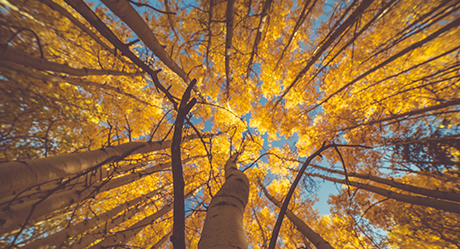Ask Miss Jean!

Jean Lovell, long-time Resource Central volunteer and former master gardener, tackles your gardening questions!
Submit your question(s) for Miss Jean to: GardenInfo@ResourceCentral.org
Q: What can I expect in my garden throughout the seasons?
Essential tasks are listed in green. Several tasks are unnecessary annually, such as pruning, dividing and transplanting. While others are dependent on the type of garden you have or want, the time you want to spend in it, and whether you choose spring or fall for major clean-up – so look at these lists as informational and not as mandates. What follows is an outline of common expectations and duties in Colorado gardens throughout the seasons.
All year long:
– occasionally check for pests, diseases and weather damage
– note exceptional successes like pretty perennial combinations or even mistakes, for future reference
– clean all cutting tools after use to prevent spreading plant diseases.
– Above all, take time to enjoy your garden, whatever the season!
W I N T E R S E A S O N
 This is a slow time for garden dreaming and planning, and it’s time to consider a different perspective. Find delight in structural elements, evergreens and ornamental grasses, as well as, colorful leaves, branches, berries and winter flowers… yes, flowers! Hellebores bloom from Jan. to about Apr. and many xeric plants set occasional blooms as well.
This is a slow time for garden dreaming and planning, and it’s time to consider a different perspective. Find delight in structural elements, evergreens and ornamental grasses, as well as, colorful leaves, branches, berries and winter flowers… yes, flowers! Hellebores bloom from Jan. to about Apr. and many xeric plants set occasional blooms as well.
– Winter watering prevents root damage that can cause the death of landscape plants and lawns
– Use ice-melting compounds only where they will melt into the street gutter (the salts can seriously damage plants. Use lawn fertilizer instead, which is also a salt, but less harmful)
– Cracked bark on deciduous trees & shrubs can stunt growth – wrap with tree wrap
DECEMBER
– Christmas tree boughs and branches make excellent winter mulches for perennial beds, and their needles even add organic material
JANUARY
– If you can’t resist a little outside gardening:
– Trim any unsightly seedheads to about 2 inches above the foliage
– Add mulch where it is thin
FEBRUARY
– If your soil is heavy clay and you feel inclined, build raised beds before the growing season
– Good time to remove unwanted turf
– Start pruning woody plants – yourself or professionally – prune out only “4-Ds” dead, damaged, diseased, demented (unacceptable growth direction)
S P R I N G S E A S O N
It’s a busy time in the garden. Start with clean-up to make way for a new year’s growth before new plantings! Clean-up presents 2 beneficial by-products – you’ll enjoy more time outdoors, and gardening is great therapy. Vary your tasks, save your body.
– Cut back perennials for spring
– Cut back tall ornamental grasses to 4 or 5 inches before growth begins (finger-comb blue fescue – using gloves, pulling out old leaves)
– Lightly rake perennial beds to move around and dry out wet leaves that can smother plants, and to bring in air and light (finger-comb vining plant areas to avoid damage)
– Remove only about 1/3 of the leaves at a time and leave a few as insulation for a few weeks
– Dig out and compost grass growing in perennial beds while soil remains fairly moist (for a serious session, water the night before and get to weeding early in the morning)
– Cut perennial weeds (i.e. thistles, bindweed, and knapweed) to the ground and hand-pull annuals
– Weed unwanted tree seedlings up to about ¼” diameter – water well, and then next day, use pliers at soil line and pull straight up, they usually come up (root and all)
– Prepare beds and borders for planting
– Begin dividing and transplanting perennials and woody plants
MARCH
– Continue winter watering
– Sprinkler system check-up
– Remove tree wrap
– Freshen mulch in perennial beds
APRIL
– Plant hardy plants
– Start weekly weeding
MAY
– Last frost date is usually mid-May
– Plant tender plants
– Begin regular checks for insects and diseases
– Fertilize existing perennials
S U M M E R S E A S O N
It’s the height of garden enjoyment! Many flowers are at their best when it’s too hot to work hard outside – so relax and enjoy. Even so, some tasks still need attention.
– Deep watering – 2-foot depth, throughout the summer and into fall, if the weather remains hot and dry
– Check watered depth with long screwdriver
– Every 5 to 7 days may be adequate
– Watering techniques for Colorado summer time
– Regular deadheading
– Maintain mulch
– Keep ahead of weeds
– Check for pests and diseases monthly
JUNE
– Place supports around tall perennials that are likely to topple
JULY
– Deeply water trees and shrubs
AUGUST
– Slow deadheading of plants whose seedheads add winter beauty
A U T U M N S E A S O N
Autumn is for tidying up before entering your own dormancy period. And, yes, a few important tasks are at hand before winter sets in.
– If your mature plants are adapted to our climate, then they should need no special winter protection
– If you are putting in new plants from a nursery, then ask what protection they advise
– Cut back those perennials for fall (Cut dormant perennials, those with brown or black top growth, to the ground and compost. For those with green basal foliage, leave 2-3 inches of foliage for winter protection.)
– Leave ornamental grasses and some perennial seedheads for winter interest and bird feed
– Continue planting, transplanting, and dividing plants, even chrysanthemums that are blooming
– Finish all planting before hard frost
– Continue watering all beds as usual until ground is frozen
SEPTEMBER
– Set perennial seedlings into their permanent places and mulch
OCTOBER
– First hard frost date is usually early October
– Begin winter watering
– Shut down sprinkler system
– Begin leaf cleanup in small doses, most go into compost, but leave some under shrubs (do not put leaves from any plants infested with a pest or disease into the compost – those go directly to the trash)
NOVEMBER
– After the ground has frozen lightly mulch perennial beds (Mulch all newly planted plants after 3 or 4 hard freezes, so that they are dormant)
– Wrap young trees with trunks < 4 inches diameter with tree wrap














